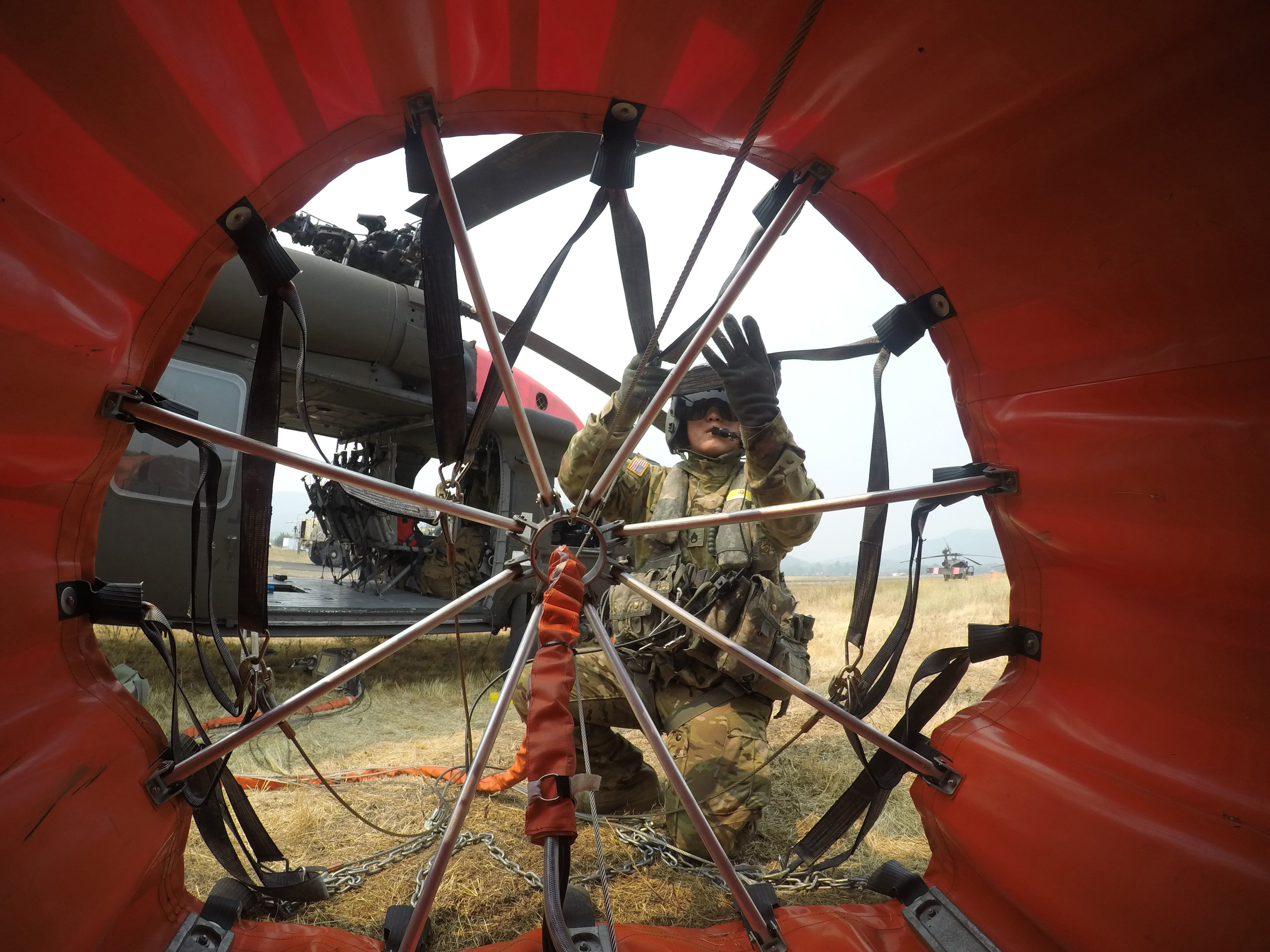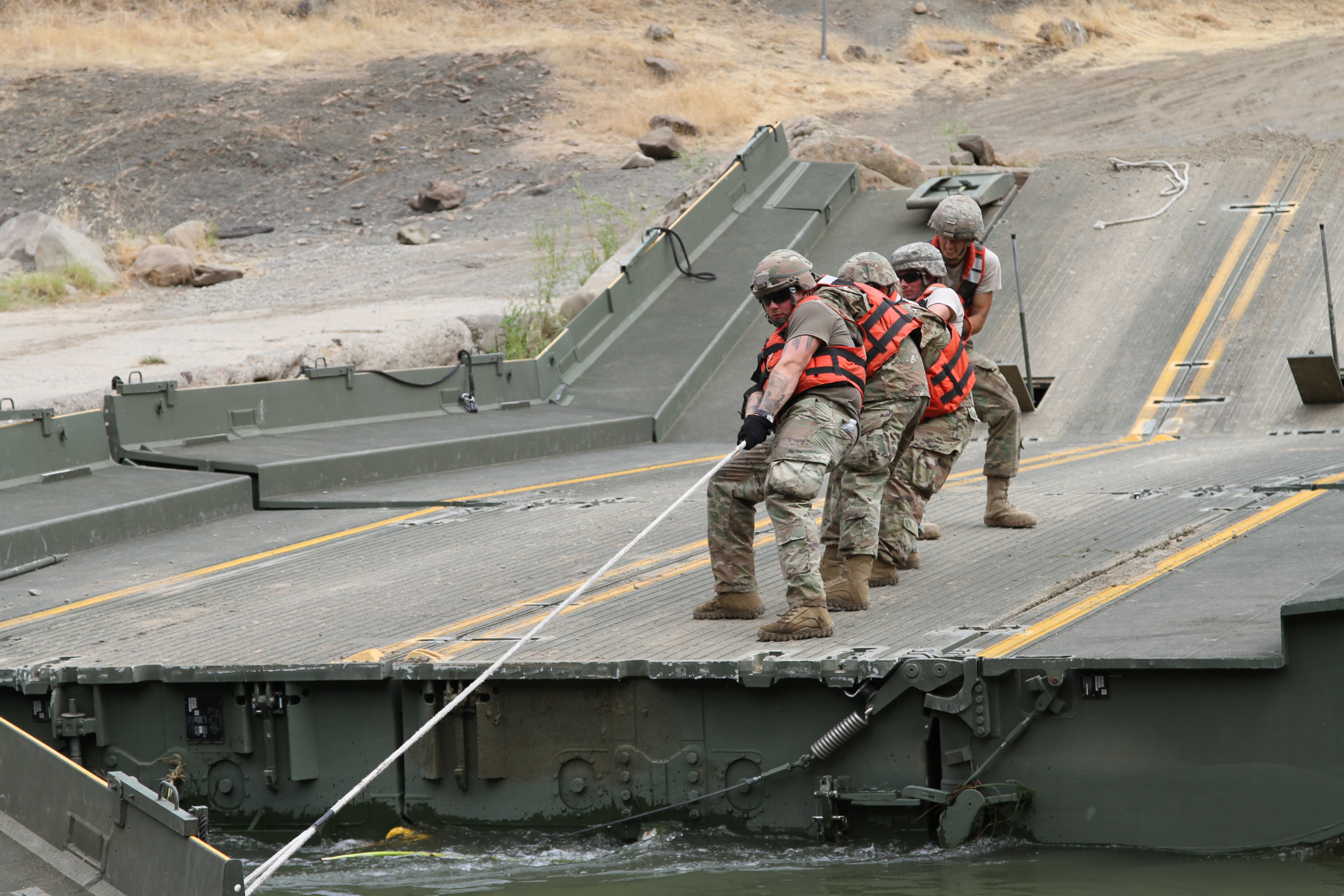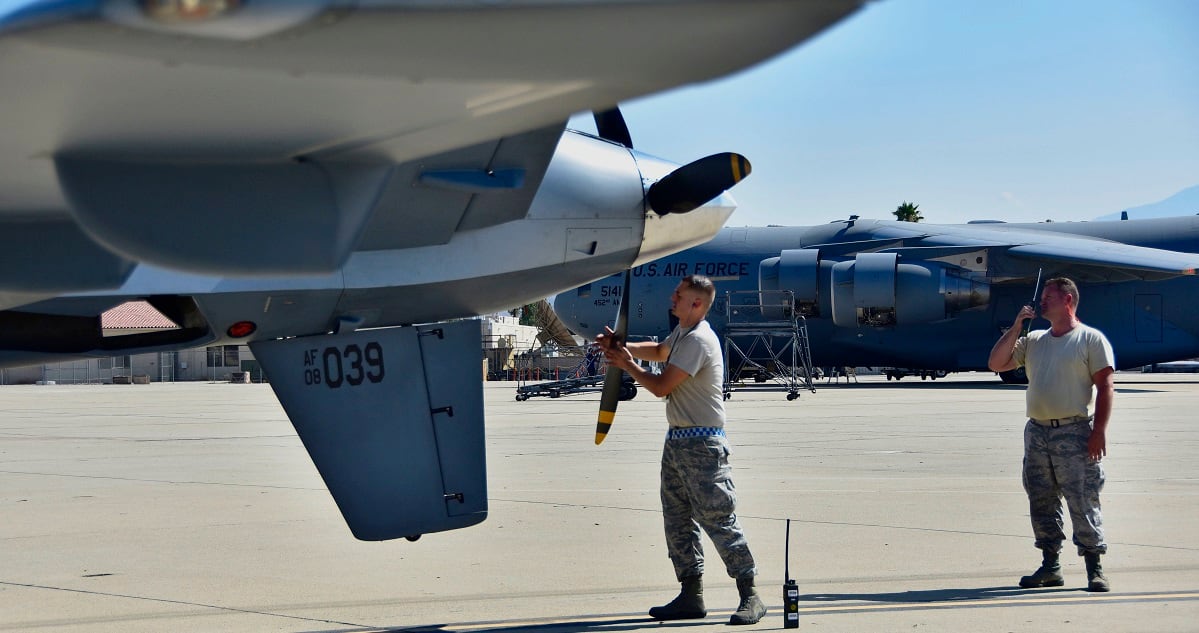Wildfires have been raging across the western United States this summer, and like many natural disasters, elements of the Army and Air National Guard, and the Air Force Reserve have been mobilized to assist local communities.
One of the states worst hit by forest fires has been California, which is battling more than 15 major fires, including the Carr Fire and the Mendocino Complex Fire, which have burned more than 178,000 acres and 256,00 acres, respectively, according to California’s Department of Forestry and Fire Protection, or Cal Fire.
Both of those fires are only about half contained.
The Mendocino blaze was created by the merger of two separate fires, and is now the largest wildfire in California’s history. The fire has destroyed more than 110 homes and roughly 100 other structures, according to local media reports.
Here’s a quick rundown of what National Guard and Air Force Reserve are doing to help.
The California Air National Guard’s 195th Wing at Beale Air Force Base and the 163rd Attack Wing out of March Air Reserve Base are conducting reconnaissance and surveillance missions for Cal Fire personnel, according to the Defense Department. This provides up-to-date intelligence on where wildfires are growing and helps organizers determine where to allocate resources.
Air Force imagery experts and analysts monitor the fire via an MQ-9 Reaper, using the drone’s sensors to collect and send precise data.
“We’re able to provide real-time eyes on in any area where the fire’s at,” said Air Force Maj. Nicholas Edwards, an intelligence analyst manager. “We can provide information to where Cal Fire can direct resources. We give information to the decision makers in a timely manner.”
Twice daily, airmen gather the drone’s data and provide printouts to Cal Fire. That information is transcribed onto maps and other information products and released to firefighters and emergency crews.

Security forces airmen from the 163rd have also helped evacuate residents in the paths of the fires.
Manned aircraft are also providing assistance.
California Army National Guard UH-66 Black Hawks have been using 600-gallon water buckets to drop retardant on the Mendocino Complex Fires.
Guard helicopters dropped close to a half-million gallons of water in just over a week as the Ranch and River fires combined to become California’s largest wildfires in state history, according to the Army.
The 146th Airlift Wing out of Port Hueneme, California, and its Modular Airborne Fire Fighting System-equipped C-130 Hercules aircraft have been battling the blaze as well.
On Aug. 8, an out-of-state Air Force Reserve unit also entered the fray. Reservists and a MAFFS-equipped C-130 from the 302nd Airlift Wing at Peterson Air Force Base, Colorado, deployed to California.
According to Col. James DeVere, MAFFS Air Expeditionary Group and 302nd AW commander, "the MAFFS-equipped C-130s have flown more than 150 fire suppression sorties, including support to California’s Carr and Mendocino fires since beginning MAFFS operations at McClellan Airtanker Base in northern California, July 26.
The reservists join the Department of Defense MAFFS Air Expeditionary Group, replacing one of the currently activated units conducting fire suppression missions. In addition to the 146th, the group’s other two airlift wings are the Nevada ANG’s 152nd AW and the Wyoming ANG’s 153rd AW.
The MAFFS units are owned by the U.S. Department of Agriculture Forest Service and, when installed in a C-130, can discharge up to 3,000 gallons of fire retardant in less than five seconds, covering an area one-quarter of a mile long by 100 feet wide. Once the load is discharged, it can be refilled in less than 12 minutes.
The work is not all done in the air, though. While aircraft help to douse the flames and prevent the spread of a large blaze, ground personnel are required to clear brush and rescue trapped civilians.

If the brush were to be left in place, it would only be more fuel for the large fire.
More than 500 troops from the California Guard’s 144th Field Artillery Battalion, 100th Troop Command, 40th Infantry Division, started preparing for ground operations in July. It was one of the earliest call-ups for field crews, according to John Winder, military asset coordinator of Cal Fire.
Guard troops are used behind the wildfire’s “front lines,” at already burned sites to prevent future flare ups. Some troops are equipped with special firefighting tools, while others serve as drivers, fuelers and builders.

One California Guard unit, a group of engineers from the 132nd Multirole Bridge Company, constructed a 100-foot improved ribbon bridge to help Cal Fire rescue services and other emergency assets move heavy equipment and personnel to the wildfire, according to an Army National Guard press release.
Kyle Rempfer was an editor and reporter who has covered combat operations, criminal cases, foreign military assistance and training accidents. Before entering journalism, Kyle served in U.S. Air Force Special Tactics and deployed in 2014 to Paktika Province, Afghanistan, and Baghdad, Iraq.




